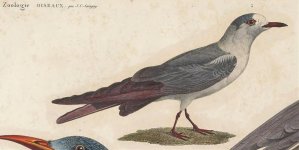Taphrospilus
Well-known member
I am wondering if authorship Thinocorus orbignyianus should be really attributed to Isidore Geoffroy Saint-Hilaire and René Primevère Lesson. Surely we can find both names in OD here. The book was published by Lesson only here.
And if I read 50.1. of the code:
So Isidore Geoffroy Saint-Hilaire did not publish the work. Why is he considered as author?
And if I read 50.1. of the code:
The author of a name or nomenclatural act is the person who first publishes it [Arts. 8, 11] in a way that satisfies the criteria of availability.
So Isidore Geoffroy Saint-Hilaire did not publish the work. Why is he considered as author?





